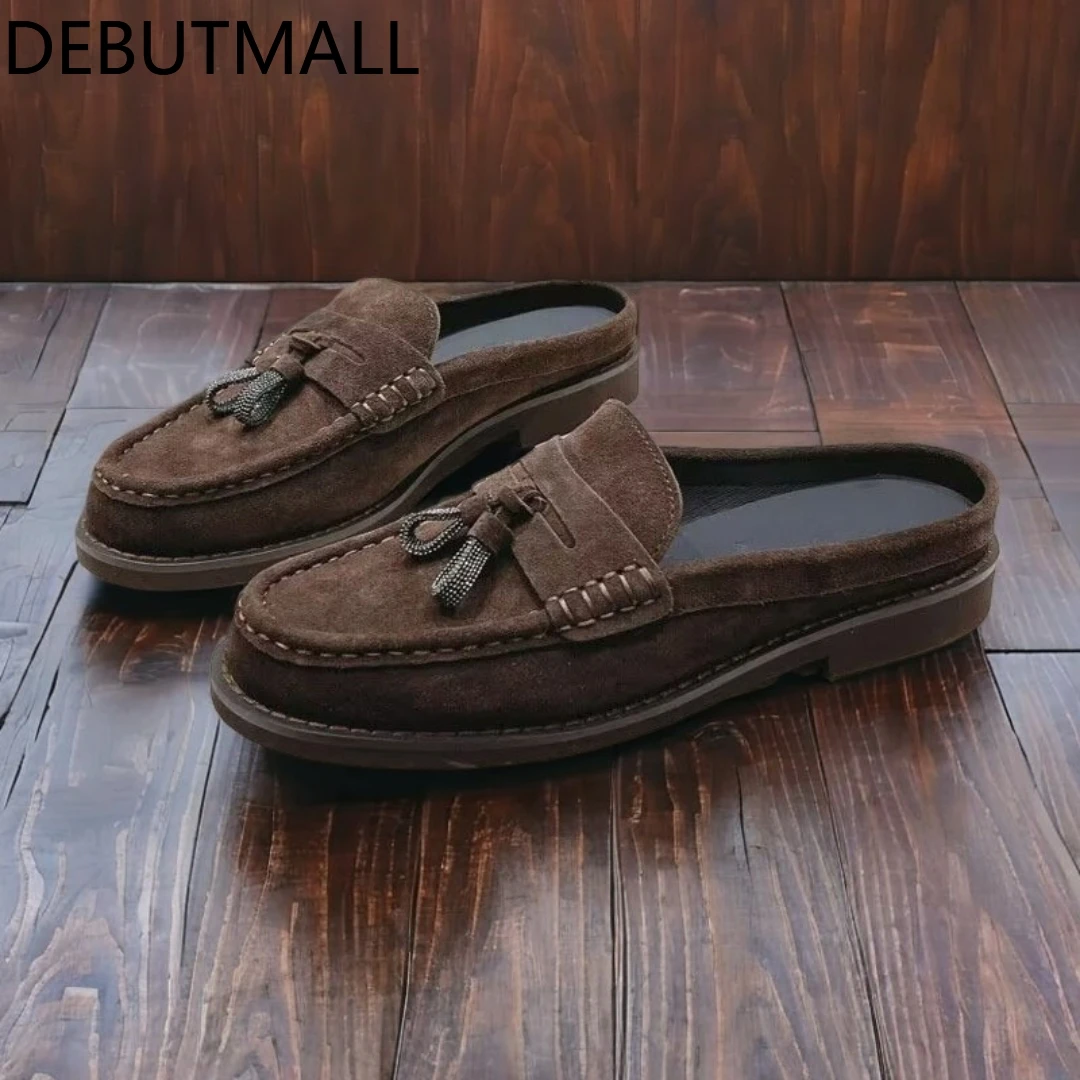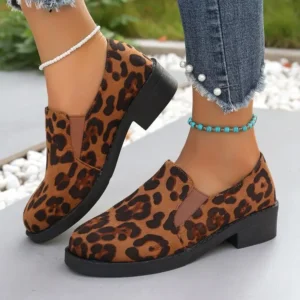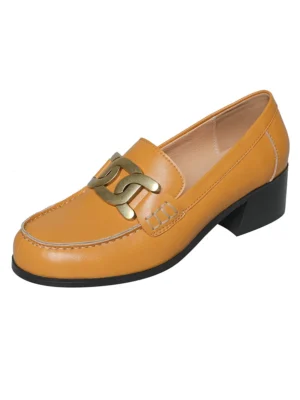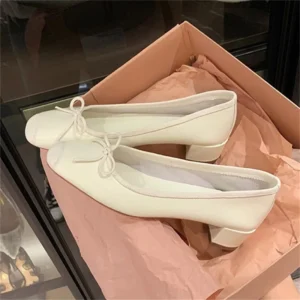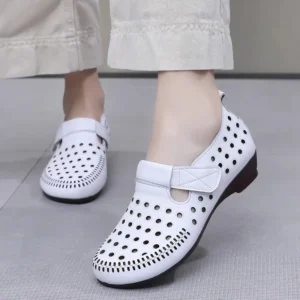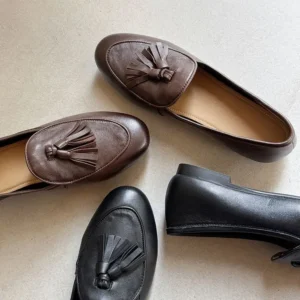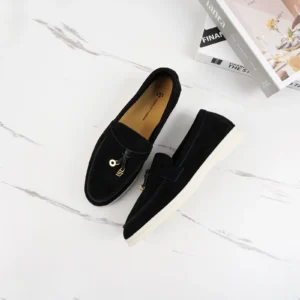Understanding Why Flat Loafers Often Cause Foot Discomfort
Flat loafers have become a staple in modern wardrobes, offering sleek style and versatility that transitions effortlessly from office to evening. Their minimalist design and slip-on convenience make them incredibly popular, but this streamlined appearance often comes at a cost to your foot health.
The fundamental issue lies in their construction. Most flat loafers lack the anatomical contouring our feet naturally need. Our feet evolved to function optimally with certain support structures—particularly arch support—which flat loafers frequently omit in favor of aesthetics and manufacturing simplicity.
Without proper support, wearing flat loafers regularly can lead to:
- Excessive pressure on the plantar fascia (the band of tissue supporting your arch)
- Strain on the muscles and ligaments throughout your feet
- Altered walking mechanics that affect your entire body’s alignment
- Increased fatigue as your feet work harder to maintain stability
Studies show that up to 87% of people experience foot-related discomfort from unsupportive footwear, with over half reporting that this impacts their daily activities. Many don’t realize that these issues compound over time, potentially leading to chronic conditions.
The good news? You don’t have to choose between style and comfort. With the right knowledge about comfortable walking loafers and support solutions, you can enjoy your favorite flat loafers without sacrificing foot health.
The Most Common Foot Problems Caused by Unsupportive Loafers
Understanding the specific issues caused by inadequate foot support can help you identify problems early and take appropriate action. Here are the most common conditions associated with unsupportive flat loafers:
Plantar Fasciitis and Arch Strain
When loafers lack arch support, the plantar fascia ligament stretches abnormally with each step. This repeated stress can cause:
* Inflammation and tiny tears in the ligament
* Sharp heel pain, especially first thing in the morning
* Persistent aching across the bottom of the foot
Metatarsalgia (Ball of Foot Pain)
Flat loafers typically have thin soles that provide minimal cushioning:
* Pressure concentrates on the metatarsal heads (ball of the foot)
* Creates a burning or bruising sensation
* Can develop calluses or feel like you’re “walking on pebbles”
Heel Pain and Achilles Issues
Without proper heel support, loafers can contribute to:
* Heel bruising from repeated impact
* Achilles tendon strain and inflammation
* Development of heel spurs over time
Alignment Problems
The lack of structural support in flat loafers affects your entire kinetic chain:
* Ankle pronation (rolling inward) or supination (rolling outward)
* Knee rotation and stress
* Hip misalignment
* Lower back strain from compensatory postures
Toe Deformities
Many people unconsciously grip with their toes to keep slip-on loafers in place:
* Hammertoes or claw toes can develop from this constant gripping
* Bunions may worsen due to uneven pressure distribution
* Toe crowding in narrower styles compounds these issues
These problems don’t develop overnight, but they can become progressive without intervention. Many people who regularly wear all-day walking comfort style loafers experience fewer of these issues because supportive features are built into the design.
Learning how to wear loafers without hurting feet can prevent many of these conditions from developing or worsening.
How to Determine If Your Loafers Lack Proper Support
Before investing in solutions, it’s important to assess whether your current loafers provide adequate support. Here’s a simple 3-step assessment to help you evaluate your footwear:
Step 1: Visual Inspection
Examine your loafers from multiple angles:
* Look at the interior—does it have any contoured shaping or is it completely flat?
* Check the outsole—is it thin and flexible everywhere, or does it have some structure?
* Observe the heel area—is there any cupping or reinforcement?
Quality loafers with good support will typically show some anatomical shaping rather than a completely flat footbed.
Step 2: Physical Test
Try these quick tests to evaluate support level:
* Bend Test: Hold the heel and toe and try to bend the shoe in half. It should bend at the ball of the foot but offer some resistance, not fold completely.
* Twist Test: Hold both ends and twist. Some flexibility is normal, but excessive twisting indicates poor structural support.
* Pressure Test: Press your thumb into the arch area. There should be some resistance or cushioning, not just empty space.
Step 3: The Wear Assessment
After wearing your loafers for a few hours, assess how your feet feel:
* Do you notice any specific areas of discomfort?
* Are you experiencing fatigue faster than with other shoes?
* Do you find yourself taking them off whenever possible?
Understanding foot-friendly loafer design tips can help you better assess what you’re looking for in supportive footwear. The “wet test”—wetting your foot and stepping on paper to see your footprint—can also help identify your arch type, informing what kind of support you need most.
Solution 1: Best Insoles and Orthotics for Flat Loafers
Adding the right insole is often the simplest way to transform your favorite flat loafers into supportive footwear. Here’s what to consider when selecting insoles for loafers:
Types of Insoles Suitable for Loafers
- 3/4 Length Insoles: These cover from heel to ball of foot without crowding the toe box, making them ideal for loafers with limited space.
- Ultra-Thin Full-Length Options: Provide whole-foot support while maintaining fit in streamlined loafers.
- Arch Support Sleeves: Targeted bands that support just the arch area without changing the overall fit.
- Metatarsal Pads: Small additions that relieve pressure on the ball of the foot.
Material Considerations
Different materials offer varying benefits:
* Leather: Conforms to your foot shape over time, breathable, durable
* Memory Foam: Offers cushioning that molds to your foot’s unique contours
* Gel: Provides excellent shock absorption, especially in the heel area
* Cork: Naturally molds to your foot while providing firm support
* Carbon Fiber: Ultra-thin yet supportive for those needing maximum space efficiency
Key Features for Loafer-Compatible Insoles
Look for these essential characteristics:
* Low profile design that doesn’t make shoes too tight
* Non-slip bottom surface to prevent shifting
* Tapered edges that don’t create pressure points
* Moisture-wicking top layer for comfort
Custom orthotics offer the most personalized solution but come at a higher cost. Over-the-counter options have improved dramatically and now offer substantial support for most common foot issues at a fraction of the price.
For those specifically looking for style combined with built-in comfort, our collection of women’s comfortable flat loafers provides excellent options with support features already integrated.
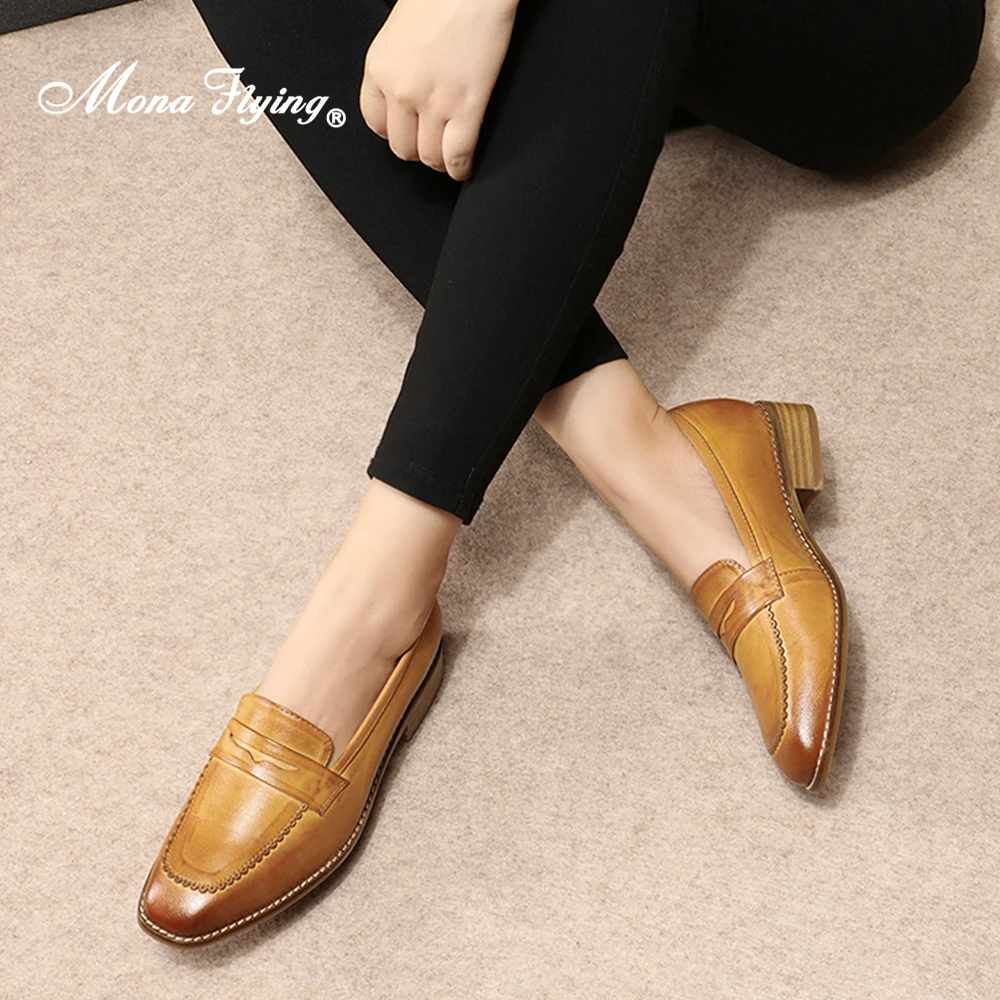
How to Properly Fit Insoles in Your Loafers
Even the best insoles won’t help if they don’t fit properly in your loafers. Follow these steps for optimal results:
Step 1: Sizing and Trimming
Most insoles come larger than needed and require trimming:
* Use your existing insole (if removable) as a template
* Trace the outline onto the new insole
* Trim carefully with scissors, making small cuts rather than large ones
* Test fit frequently during trimming to avoid removing too much
Step 2: Positioning and Installation
- Remove the existing insole if it’s loose or thin and replaceable
- If the original insole is glued down, place the new insole directly on top
- Ensure the heel cup aligns precisely with your heel position
- Check that the arch support aligns with your foot’s arch
Step 3: Testing the Fit
After installation:
* Insert your foot and stand up to distribute weight naturally
* Walk around to check for slipping or discomfort
* Allow a short adjustment period (1-3 days) for your feet to adapt
If you experience pinching or tightness after adding insoles, try a thinner option or a 3/4 length design. For shoes with very limited space, consider removing the original insole first or looking into specific low-profile options designed for dress shoes.
The process of making penny loafers comfortable often requires this type of customization, as their classic design typically prioritizes aesthetics over support.
Solution 2: Top Supportive Loafer Brands That Don’t Sacrifice Style
If you’re in the market for new loafers, selecting brands known for supportive designs can eliminate the need for aftermarket insoles. At Artisan Haul, we carefully curate loafers that combine elegant styling with foot-friendly features.
Leading Brands in Supportive Loafers
Several manufacturers have mastered the art of building comfort into stylish loafers:
- Anatomical Footbed Specialists: Brands that incorporate contoured footbeds designed to match natural foot shape
- Arch Support Innovators: Companies using reinforced arch structures without bulky appearances
- Cushioning Technology Leaders: Manufacturers who integrate shock-absorbing materials invisibly within classic designs
Key Design Features to Look For
Truly supportive loafers incorporate these elements without compromising style:
* Contoured footbeds that follow the natural shape of the foot
* Memory foam or gel cushioning strategically placed at pressure points
* Reinforced heel counters that provide stability
* Flexibility at the forefoot while maintaining structure
* Premium materials that mold to your feet over time
Material Quality Matters
Beyond design, material selection significantly impacts both comfort and longevity:
* Full-grain leather uppers that conform to your foot shape
* Breathable linings that reduce moisture
* Resilient midsole materials that maintain their supportive properties
* Outsoles that provide both grip and shock absorption
While supportive loafers often command higher prices, the investment pays dividends in comfort, foot health, and longevity. Many customers find that one pair of quality leather flat loafers outlasts multiple pairs of cheaper, less supportive alternatives.
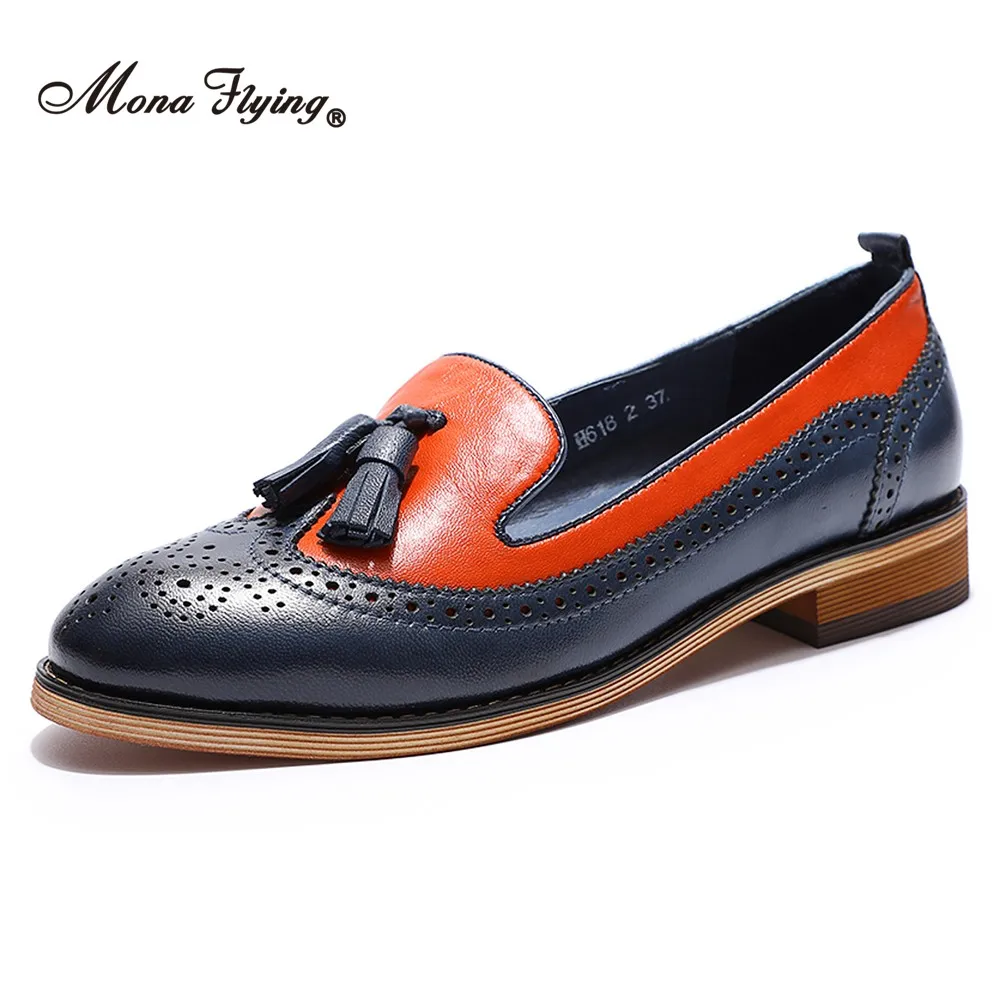
Key Features to Look for When Shopping for Supportive Loafers
When evaluating loafers for their supportive qualities, use this comprehensive checklist to ensure you’re making a foot-friendly choice:
Contoured Footbed
- Should have visible shaping that matches foot anatomy
- Gentle rise under the arch area
- Slight depression for heel sitting
- Not completely flat from heel to toe
Arch Support
- Supportive but not intrusive
- Positioned correctly (test by standing)
- Firm enough to provide support but with some give
- Appropriate for your specific arch type (low, medium, or high)
Strategic Cushioning
- Extra padding at heel strike point
- Cushioning at the ball of the foot (metatarsal area)
- Materials that bounce back rather than compress permanently
- Consistent comfort throughout the shoe
Heel Construction
- Firm heel counter (back part that wraps around heel)
- Some cushioning inside the heel cup
- Slight elevation (even 1/2 inch can reduce Achilles strain)
- Good stability when standing and walking
Flexibility and Fit
- Bends at the ball of the foot, not in the arch
- Upper material that moves with your foot without creating pressure points
- Adequate toe box width to prevent crowding
- Secure fit that doesn’t require toe-gripping
Many of our most comfortable loafers for walking all day incorporate these features without the clunky appearance typically associated with “comfort shoes.” The best designs seamlessly integrate support features while maintaining the classic, streamlined loafer silhouette.
Adapting Your Loafers for Different Foot Conditions
Different foot structures and conditions require specialized approaches to support. Here’s how to adapt loafers for specific foot issues:
For Flat Feet (Fallen Arches)
- Choose insoles with moderate, graduated arch support
- Look for loafers with broader bases for stability
- Firm heel cups help prevent excessive pronation
- Avoid completely flat styles with no structure
For High Arches
- Prioritize cushioning to absorb shock
- Select insoles that fill the higher arch gap
- Look for flexible loafers that allow natural movement
- Extra cushioning in the heel and ball of foot areas
For Overpronation (Feet Rolling Inward)
- Structured insoles with medial (inner) arch support
- Loafers with reinforced heel counters
- Styles with slightly wider bases for stability
- Firmer midsole materials on the inner side
For Supination (Feet Rolling Outward)
- Cushioned insoles that encourage central weight distribution
- Flexible loafers that don’t restrict natural correction
- Enhanced cushioning along the outer edge
- Styles with shock-absorbing properties
For Bunions and Hammertoes
- Wider toe boxes that don’t press on protrusions
- Soft, flexible upper materials that won’t create pressure points
- Removable insoles to accommodate custom orthotics
- Styles with adjustable features like elastic goring
Our collection of penny loafers includes options that can be easily adapted with different inserts to address these specific foot conditions while maintaining their classic appeal.
Women's Comfortable Flat Loafers, Women's Leopard Print Loafers, Women's Low Heel Loafers
$82.50 Select options This product has multiple variants. The options may be chosen on the product pageWomen's Block Heel Loafers, Women's Heeled Penny Loafers, Women's Monk Strap Loafers
$194.04 Select options This product has multiple variants. The options may be chosen on the product pageWomen's Block Heel Loafers, Women's Square Heel Loafers, Women's Square Toe Flat Loafers
Price range: $73.61 through $86.41 Select options This product has multiple variants. The options may be chosen on the product pageWomen's Comfortable Flat Loafers, Women's Leather Flat Loafers, Women's Round Toe Flat Loafers
$124.88 Select options This product has multiple variants. The options may be chosen on the product pageWomen's Black Flat Loafers, Women's Black Penny Loafers, Women's Classic Tassel Loafers
$194.28 Select options This product has multiple variants. The options may be chosen on the product pageWomen's Loafer Mules, Women's Suede Flat Loafers
$190.23 Select options This product has multiple variants. The options may be chosen on the product page
Breaking In and Maintaining Your Supportive Loafers
Proper break-in techniques and regular maintenance extend the life of your supportive loafers while ensuring they continue to provide the comfort you need.
Effective Break-In Strategies
- Start with short wearing periods (1-2 hours) and gradually increase
- Use thin socks during break-in to prevent blisters
- Apply leather conditioner to soften stiff areas
- Use a wooden shoe tree when not wearing to help shape the footbed
- Target specific tight spots with a hairdryer on low heat followed by walking
Material-Specific Care
- Leather loafers: Clean with appropriate leather cleaner, condition regularly, and use water-repellent protection
- Suede loafers: Brush regularly with a suede brush, use suede protector spray, and clean stains with a suede eraser
- Fabric loafers: Spot clean, use fabric protector, and allow thorough drying after cleaning
Maintaining Support Features
- Replace insoles when they show compression or wear (typically every 6-12 months with regular wear)
- Check for midsole compression by examining wear patterns
- Monitor for asymmetrical wear that might indicate it’s time for replacement
- Store with shoe trees to maintain shape and support
- Alternate between multiple pairs to allow recovery of cushioning materials
The secrets of supreme comfort in loafers often involve this kind of proactive care that prevents premature breakdown of support features.
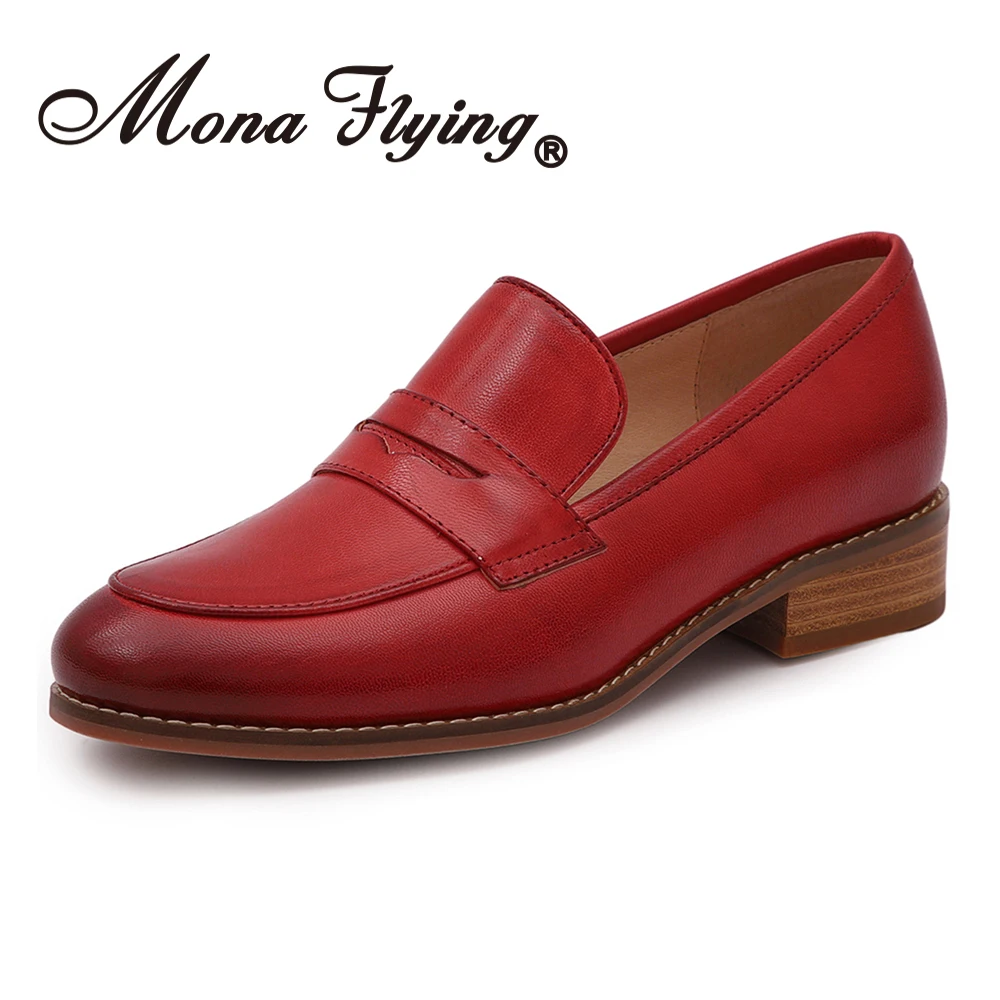
The Long-Term Benefits of Properly Supported Feet
Investing time and resources into proper foot support yields benefits that extend far beyond immediate comfort:
Whole-Body Alignment Improvements
- Proper foot support creates the foundation for skeletal alignment
- Reduced strain on knees, hips, and lower back
- Improved posture and more efficient movement patterns
- Decreased muscle fatigue throughout the body
Pain Prevention and Management
- Reduction in foot-specific pain conditions
- Less compensation-related pain in other joints
- Decreased end-of-day discomfort and fatigue
- Prevention of chronic conditions that develop over time
Enhanced Activity and Lifestyle
- Greater comfort allows for increased walking and standing
- Improved confidence and focus without foot pain distraction
- Better sleep quality due to reduced pain and tension
- Extended ability to remain active as you age
Long-Term Foot Health
- Prevention of progressive foot deformities
- Maintenance of proper joint alignment
- Preserved muscle balance and function
- Reduced risk of mobility limitations later in life
Many customers tell us that after switching to supportive footwear like our suede flat loafers, they experience improvements in problems they didn’t even realize were connected to their shoes.
Frequently Asked Questions About Foot Support in Loafers
How can I tell if my loafers have enough support?
A supportive loafer will have some contour to the footbed (not completely flat), resistance when you try to twist the shoe, cushioning at pressure points, and a secure heel. After wearing them for several hours, your feet shouldn’t feel fatigued or painful.
Are all flat shoes bad for your feet?
Not necessarily. The term “flat” often refers to the lack of a raised heel, which can be perfectly fine. The problem comes when shoes are flat inside (no arch support or contouring) and have thin, unsupportive soles. Some flat shoes incorporate excellent support features despite their low profile.
What are the best supportive loafers for professional settings?
Look for loafers with hidden support features like contoured footbeds and cushioned insoles that maintain a sleek, professional appearance. Our classic flat loafers combine workplace-appropriate styling with supportive construction.
Is it worth investing in custom orthotics for loafers?
Custom orthotics can be worthwhile if you have significant foot issues or structural abnormalities. However, many people find that high-quality over-the-counter insoles designed specifically for dress shoes provide sufficient support at a much lower price point.
How long should insoles last in loafers?
With regular wear, most insoles need replacement every 6-12 months as they compress and lose supportive properties. Higher-quality materials like carbon fiber or cork may last longer, while foam options typically compress more quickly.
Do supportive loafers need a break-in period?
Yes, even supportive loafers benefit from a break-in period as the materials mold to your specific foot shape. This typically takes 1-2 weeks of regular wearing. The most comfortable loafers often become even more personalized and supportive after this initial period.
With the right support strategies, you can enjoy both the classic style of loafers and the comfort your feet deserve. Your future self will thank you for the attention to foot health that prevents problems before they begin.

